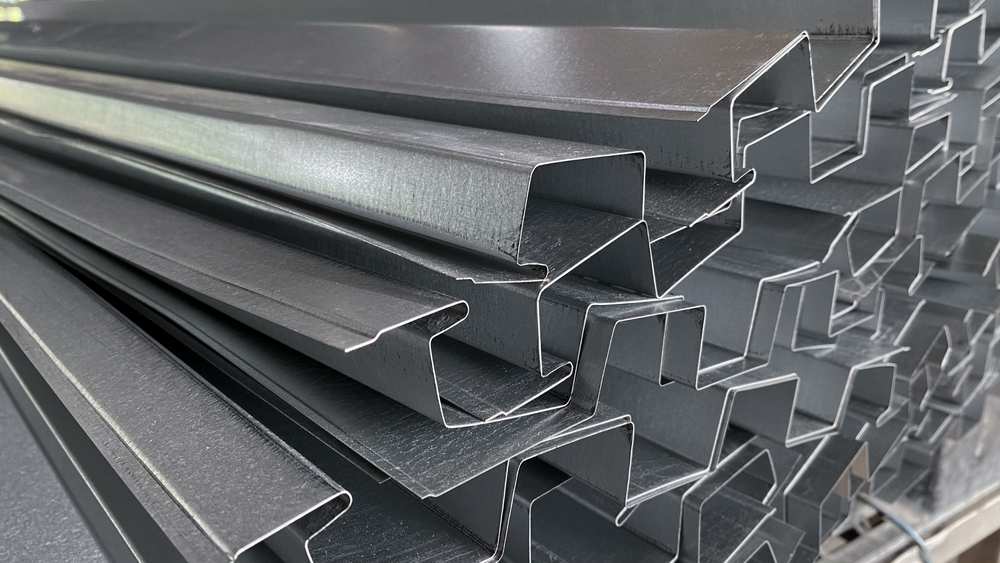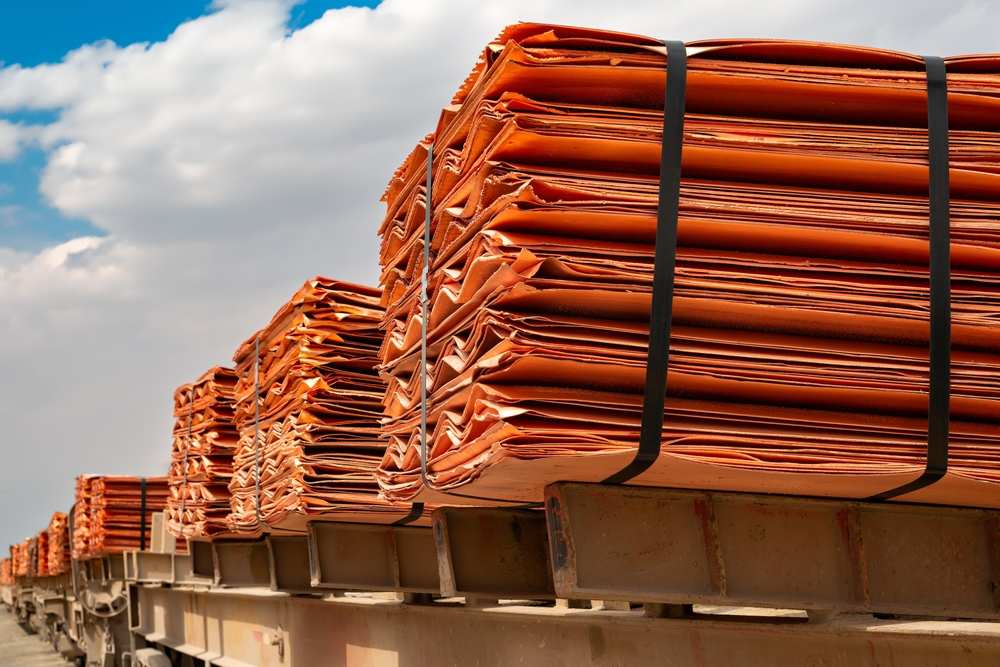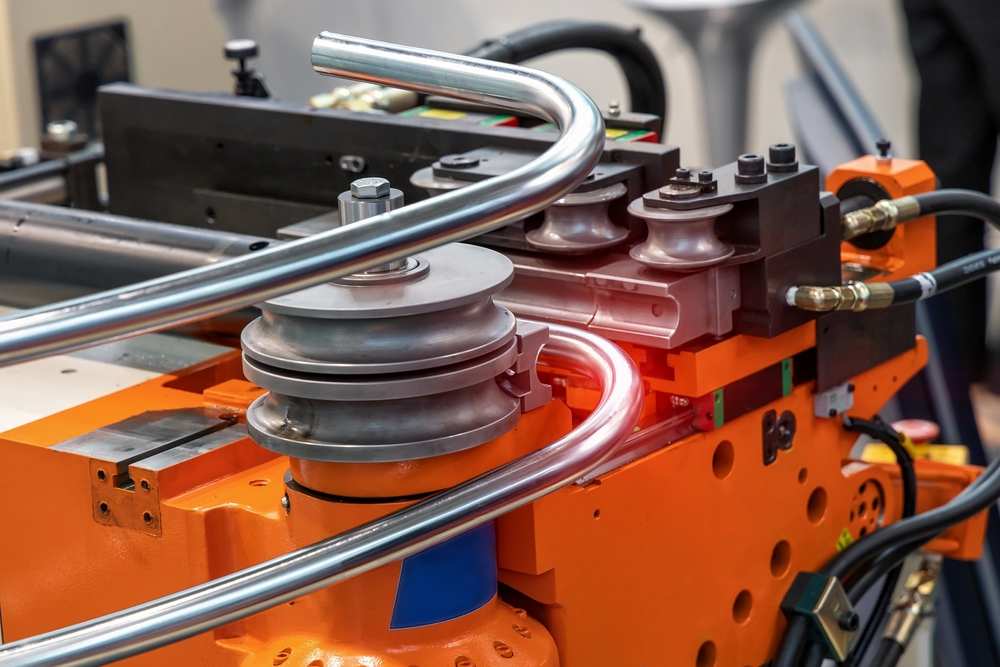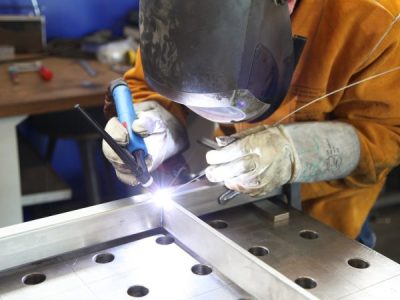In metal fabrication, selecting the right material is critical to the project’s success. It affects not only the mechanical performance and durability of the final product but also its resistance to environmental conditions and overall cost-effectiveness. Understanding the properties and applications of different metals can help you make informed decisions and achieve optimal results in your fabrication projects.
Cost considerations also play a crucial role; selecting a material that balances initial expenses with long-term maintenance and lifecycle costs can lead to significant savings. Ultimately, the right material choice aligns with the specific requirements of the project, ensuring safety, compliance, and overall success.

Metals Commonly Used in Metal Fabrication:
Steel in Metal Fabrication
Carbon Steel
Carbon steel, known for its high strength, is extensively used in the construction of frameworks, bridges, and other infrastructure. Its durability makes it ideal for manufacturing various machinery components, and it is also commonly found in automotive parts, including car bodies and engine components. Its ability to be easily machined and formed makes it versatile for different fabrication processes.
Types
Low Carbon Steel (Mild Steel): This type is easily weldable and formable, making it suitable for general-purpose applications where high strength is not a primary concern.
- Uses: Construction, automotive panels, and everyday metal products.
- Properties: Soft and ductile, easy to cut, bend, and weld.
Medium Carbon Steel: This type is known for its higher strength and hardness and is used where stronger materials are needed.
- Uses: Manufacturing of gears, axles, and machinery parts.
- Properties: Balanced between strength and ductility, more challenging to weld than low-carbon steel.
High Carbon Steel: This type is very strong and hard, often used for tools and high-stress applications.
- Uses: Cutting tools, blades, and high-strength wires.
- Properties: High hardness and strength, less ductile, and more difficult to weld.
Stainless Steel
Stainless steel is widely used in various applications due to its corrosion resistance and aesthetic appeal. In kitchens, it is ideal for sinks, countertops, and appliances. Its hygienic and resistance to corrosion make it essential for medical instruments and surgical tools. Additionally, its durability and polished finish make it suitable for architectural elements such as railings and facades, enhancing both functionality and visual appeal.
Types
Austenitic Stainless Steel: Non-magnetic and excellent in formability, making it versatile for a wide range of applications.
- Uses: Food processing equipment, kitchen utensils, and chemical containers.
- Properties: High corrosion resistance, good weldability, and formability.
Ferritic Stainless Steel: Magnetic and offers good resistance to stress corrosion, often used in industrial and automotive applications.
- Uses: Automotive parts, industrial equipment, and domestic appliances.
- Properties: Moderate corrosion resistance, magnetic, good ductility.
Martensitic Stainless Steel: Known for its high strength and hardness, it is suitable for applications requiring a tough, wear-resistant material.
- Uses: Cutlery, surgical instruments, and some industrial tools.
- Properties: High strength, magnetic, more brittle than other stainless steels.

Aluminium in Metal Fabrication
Aluminium is a key material in metal fabrication due to its lightweight and versatile properties. Its durability is unmatched as it naturally forms a protective oxide coating, preventing corrosion. In aerospace, its lightweight nature is critical for reducing weight in aircraft components. In the automotive industry, aluminium is used in car bodies and engine components to enhance fuel efficiency. Its excellent thermal conductivity and lightness also make it ideal for consumer electronics such as laptops and smartphones, contributing to the sleek design and efficient performance of these devices.
Types
3000 Series: Known for good corrosion resistance, it is often used in applications where this property is crucial.
- Uses: Beverage cans, roofing, and siding.
- Properties: Manganese is the primary alloying element, providing good formability and corrosion resistance.
5000 Series: Offers excellent corrosion resistance, especially in marine environments.
- Uses: Marine applications, chemical tanks, and pressure vessels.
- Properties: Magnesium is the primary alloying element, providing high strength and resistance to marine environments.
6000 Series: Versatile with good strength and machinability, making it suitable for a wide range of uses.
- Uses: Construction materials, transportation components, and bridge structures.
- Properties: Silicon and magnesium are the primary alloying elements, providing good mechanical properties and corrosion resistance.

Less Common Metals in Metal Fabrication
Copper
Copper is widely used in electrical wiring due to its superior electrical conductivity, making it essential for power transmission and distribution. It is also a popular choice for plumbing systems, providing durable and corrosion-resistant pipes and fittings. It forms a protective patina over time, which shields it from further corrosion. In addition, copper is used in roofing and architectural elements for its aesthetic appeal and long-lasting performance. Its excellent thermal conductivity makes it ideal for heat exchangers and cooling systems. The versatility of copper extends to various industries as it’s easily shaped and formed.
Types
Pure Copper: Primarily used in electrical applications where high conductivity is essential.
- Uses: Electrical wiring, printed circuit boards, and electromagnetic components.
- Properties: Highly conductive, ductile, and corrosion-resistant.
Copper Alloys (Bronze and Brass): These alloys enhance copper’s strength and durability for broader applications.
- Bronze: An alloy of copper and tin, known for its strength and wear resistance.
- Uses: Bearings, bushings, sculptures, and marine hardware.
- Properties: Strong, durable, and corrosion-resistant.
- Brass: An alloy of copper and zinc, valued for its corrosion resistance, machinability, and aesthetic appeal.
- Uses: Musical instruments, decorative items, and plumbing fittings.
- Properties: Attractive appearance, good machinability, and resistance to corrosion.
Brass
Brass is frequently used in the production of musical instruments, offering excellent acoustic properties that produce rich, warm sounds. Its corrosion resistance and machinability make it a favoured material for plumbing fittings and valves as it’s easily shaped and formed. Additionally, brass’s attractive golden appearance lends itself well to decorative items, hardware, and fixtures, adding an elegant touch to home and commercial interiors. In industrial applications, brass components are utilised for their durability and ease of fabrication, making them suitable for precision engineering tasks and complex assemblies.
Composition
Alloy of copper and zinc: The ratio of copper to zinc can be adjusted to create different types of brass with varying properties.
Bronze
Bronze is highly valued for its strength and durability, making it an ideal material for bearings and bushings in machinery where low friction and wear resistance are critical. It is also a popular choice for sculptures and statues, providing artists with a material that can capture fine details and withstand the elements. In marine hardware, bronze’s excellent resistance to seawater corrosion makes it suitable for ship fittings, propellers, and underwater equipment. Its versatility extends to architectural elements and tools, where long-lasting performance and aesthetic qualities are essential.
Composition
Alloy of copper and tin: This combination provides enhanced strength and durability compared to pure copper.
Titanium
Titanium is essential in the aerospace industry, where its high strength-to-weight ratio contributes to fuel efficiency and performance in aircraft and spacecraft. In the medical field, titanium’s biocompatibility makes it ideal for implants such as joint replacements and dental implants, promoting successful integration with human tissue. Additionally, titanium is used in high-performance sports equipment like golf clubs and bicycle frames, where lightweight and durable materials enhance athletic performance. Its corrosion resistance also makes it suitable for chemical processing and marine applications, ensuring longevity in harsh environments.
Applications
High-performance applications requiring lightweight and strong materials: Titanium’s properties make it suitable for industries where performance and durability are critical.
Nickel
Nickel plays a crucial role in the aerospace sector, particularly in jet engines and gas turbines, where its high-temperature stability and strength are indispensable. It is also vital in chemical processing equipment, offering excellent resistance to corrosive substances and maintaining structural integrity under extreme conditions. Furthermore, nickel is a key component in stainless steel alloys, enhancing their corrosion resistance, strength, and durability. This makes it invaluable in construction, automotive, and industrial applications, where reliable performance and longevity are required.
Applications
Nickel is used as an alloying element in stainless steel and other high-performance alloys. Its properties improve the performance of stainless steels and other alloys in demanding applications.
Alloys in Metal Fabrication
Custom Alloys
Custom alloys are utilised across various industries, including aerospace, automotive, and construction, where specific material properties are critical for performance. These alloys are tailored to meet unique application requirements, such as enhanced strength, improved corrosion resistance, or specialised electrical conductivity. In aerospace, custom alloys are used in aircraft components to reduce weight while maintaining strength. In the automotive industry, they improve fuel efficiency and safety. Construction projects benefit from custom alloys’ durability and resistance to environmental stressors, ensuring the longevity and reliability of infrastructure and buildings.
Applications
- Industries such as aerospace, automotive, and construction use custom alloys where standard metals do not meet performance requirements.
- Situations requiring specialised material properties: Applications that demand unique combinations of strength, durability, and resistance to environmental factors.
Factors Influencing Material Choice
Mechanical Properties
When selecting materials for metal fabrication, the mechanical properties of the metal are paramount. Strength, which includes tensile and yield strength, determines how much load a material can bear before failing. Hardness or resistance to deformation and wear is crucial for tools and machinery parts that undergo frequent use. Ductility, the ability of a material to deform without breaking, is important for applications requiring bending or shaping. These properties directly impact the performance and longevity of the fabricated components, ensuring they meet the operational demands of their specific applications.
Environmental Conditions
Environmental conditions significantly influence material choice in metal fabrication. Metals exposed to corrosive environments, such as marine or industrial settings, require excellent corrosion resistance to maintain integrity and function over time. For instance, stainless steel and aluminium are preferred in these scenarios due to their ability to withstand oxidation and rust. Temperature stability is another critical factor; materials like nickel alloys, which maintain their properties at high temperatures, are essential in aerospace and chemical processing applications. Understanding the specific environmental challenges a material will face helps in selecting the most suitable option.
Cost Considerations
Cost is a major factor in material selection, balancing initial expenses with long-term benefits. While some materials like titanium and custom alloys offer exceptional performance, they can be prohibitively expensive. Budget constraints often necessitate a compromise between material properties and cost-effectiveness. It’s important to consider not only the material cost but also fabrication, maintenance, and lifecycle costs. For instance, investing in a more expensive but durable and low-maintenance material might be more economical over the product’s lifetime compared to a cheaper, less durable alternative.
Application-Specific Requirements
Each application has unique requirements that dictate the material choice. In the aerospace industry, lightweight and strong materials like aluminium and titanium are crucial for reducing fuel consumption and enhancing performance. Medical applications demand biocompatible materials such as titanium, which do not react with bodily tissues. Architectural projects often require aesthetically pleasing and corrosion-resistant materials like stainless steel. By understanding the specific demands of the application, including regulatory and safety standards, one can select materials that not only meet technical specifications but also ensure compliance and safety.
Choosing the right materials for your metal fabrication project involves a comprehensive evaluation of mechanical properties, environmental conditions, cost, and application-specific requirements. The goal is to find a balance that ensures optimal performance, durability, and cost-effectiveness. By understanding the unique attributes and uses of different metals and alloys, you can make informed decisions that enhance the quality and success of your fabrication projects.




